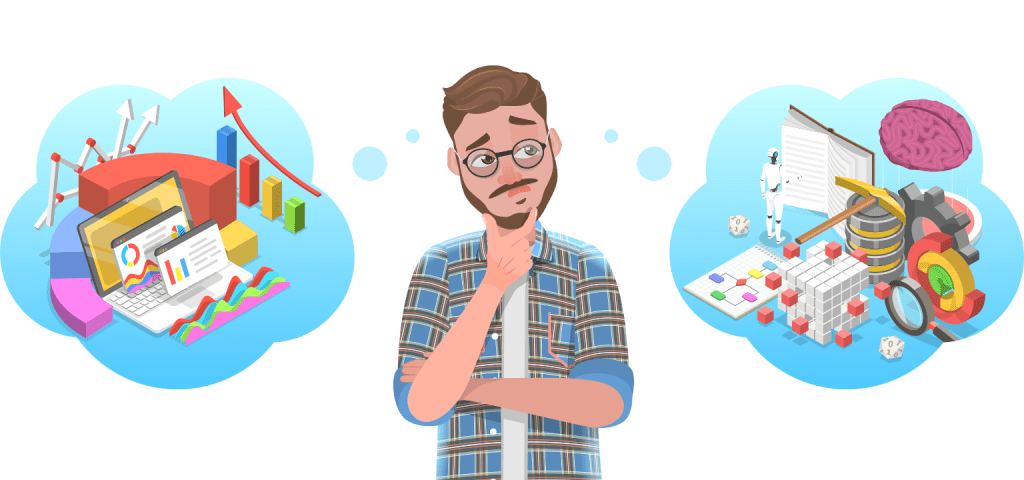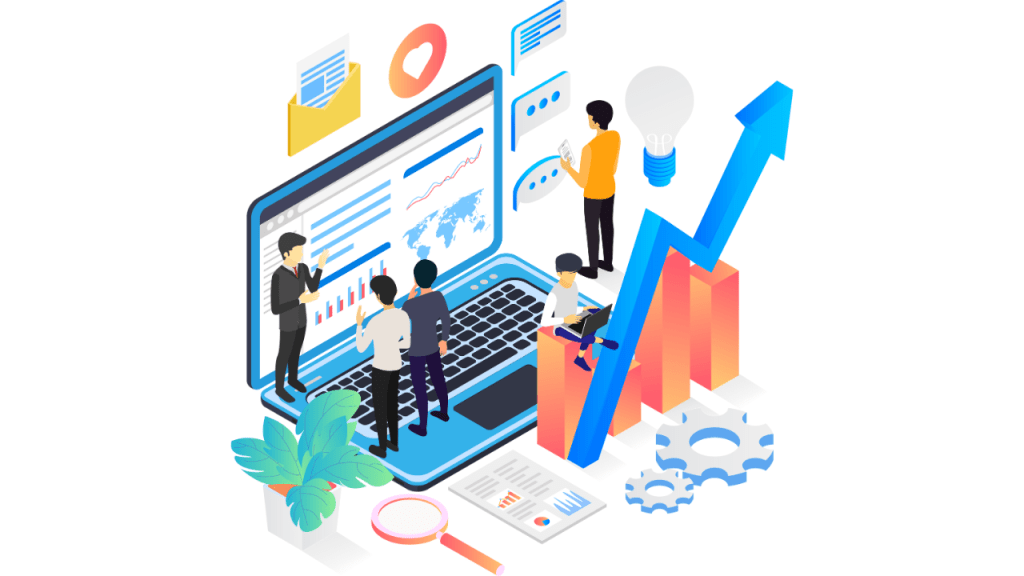“Our sales dropped by 15% last quarter.”
Who steps in to explain the numbers: the analyst who studies what happened, or the scientist who predicts what will happen next? While both roles sound alike, they serve different purposes in a company.
This article clears up the confusion by breaking down what data analysts and data scientists actually do, the skills they need, and how each role shapes a career path. By the end, you’ll have a clear sense of which direction fits your interests and goals.

Both roles tackle questions using data, but the nature of their work and the problems they solve set them apart.
A data analyst focuses on understanding the past and present by digging into available information.
Primary Goal: To analyze historical data and answer: What happened and why did it happen?
Focus: Descriptive and diagnostic analytics. Analysts search for patterns and translate them into clear insights that guide decisions.
A data scientist takes the findings further by applying advanced methods to forecast outcomes and recommend actions.
Primary Goal: To use advanced techniques to answer: What will happen next and what’s the best course of action?
Focus: Predictive and prescriptive analytics. Scientists build models and systems that not only anticipate the future, but also shape what happens next.
You’ll notice some shared skills, like SQL and data cleaning, but the day-to-day work and end products start to diverge fast.
While both roles work with data, the tools they use and the outcomes they produce can look very different. Analysts focus on clarity and explanation, while scientists build systems that predict and guide future choices.
Analysts spend much of their time making raw information usable and turning it into reports that answer business questions.
Core responsibilities of data analysts include:
Key Tools: SQL, Excel, and BI tools such as Tableau or Power BI.
Data scientists use more advanced methods to create models and algorithms that can predict or recommend outcomes.
Core responsibilities of data scientists include:
Key Tools: Python (with Pandas, scikit-learn, TensorFlow), R, and Jupyter Notebooks.
The next section gives you a quick side-by-side. It’s not perfect for every company, but it captures the usual separation of work.
| Aspect | Data Analyst | Data Scientist |
| Focus | Descriptive and diagnostic, past and present | Predictive and prescriptive, future-oriented |
| Core Question | What happened and why | What will happen and what should we do |
| End Product | Reports, dashboards, plain-language insights | Predictive models, algorithms, data products |
| Technical Depth | Solid command of data analysis and BI tools | Strong depth in programming, math, and ML |
| Typical Background | A degree, strong portfolio, or a focused bootcamp | Advanced degree or intense bootcamp experience, plus projects |
A quick way to remember it: analysts explain the past, scientists build for the future.

These roles should not live in separate corners. In a healthy data culture, they share context, pass the baton, and loop back as results roll in.
An analyst might flag that customer support wait times spiked for users on older devices. That insight lands in a weekly review.
A data scientist then uses this finding as a feature in a churn model, testing whether long wait times predict cancellations in the next 30 days.
Once the model confirms it, the team ships a new routing rule that sends high-risk users to a faster queue. The analyst monitors the dashboard, checks whether churn falls as expected, and writes up the impact for leadership.
A real-world scenario: An analyst sees a sharp drop in engagement in one region. They surface the “what” and the likely “why.”
A data scientist picks it up, builds a model to predict which other accounts are likely to slow down next, and alerts customer success before the next quarter’s targets are at risk.
The loop closes when the analyst measures results and confirms the model actually changed outcomes, not just scores on a slide.
Titles vary by company stage and data maturity. Some teams post a “Data Scientist” role where the day-to-day looks like classic analysis and dashboard building. Other teams say “Data Analyst,” yet ask for heavy modeling and Python in production.
Look beyond the title. Read the responsibilities, the tech stack, and the metrics you’ll own. If the job asks for SQL, dashboards, and stakeholder reporting, that’s analyst territory.
If it calls for model development, experiment design, and deployment, that’s closer to a data scientist. Also, scan the interview plan. A take-home that focuses on cleaning and visualization suggests an analyst role.
A notebook that asks for feature engineering, cross-validation, and model evaluation points to scientist work.
A small note that matters: some companies expect one person to do both, especially at earlier stages. If you like variety and can shift gears comfortably, those roles can be fun and fast-learning.

Generative tools and automated analytics already change daily workflows. That doesn’t erase either job…it reshapes both.
Tools will handle more routine reporting and one-off visuals. The value moves to interpretation, context, and the “so what” factor. The analyst who can interview stakeholders, ask tighter questions, and link numbers to actions will stand out.
You’ll still use SQL and BI tools, but you’ll spend more time diagnosing causes, scoping tests, and validating results that autosummaries gloss over.
Demand rises for people who can train, fine-tune, and monitor models in production. Off-the-shelf models just get you part of the way.
The edge comes from adapting them to company data, adding domain features, and building the glue that keeps models reliable.
Expect more work around evaluation frameworks, prompt and feature pipelines, fairness checks, and cost control. The scientist who ships reliable systems and proves impact remains in high demand.
Note: Both roles need stronger data literacy across the org. As AI features spread, more teams will ask better questions. This means you’ll spend time coaching, documenting, and setting standards for trustworthy use of data.
You can make the jump…many have. You will bring strong SQL, a good eye for data quality, and stakeholder chops that help models see daylight. Now, add depth in math, modeling, and software practices.
The roadmap goes like this:
If you enjoy finding patterns and shaping business decisions through clear insights, the data analyst role may be the right fit. It’s about telling the story behind the numbers and helping teams act quickly.
On the other hand, if you’re drawn to algorithms, models, and forecasting what comes next, the data scientist role offers that path. In short, analysts explain the past, while scientists design for the future.
Both roles matter, and the best choice comes down to your curiosity, interests, and the kind of impact you want to make in your career.